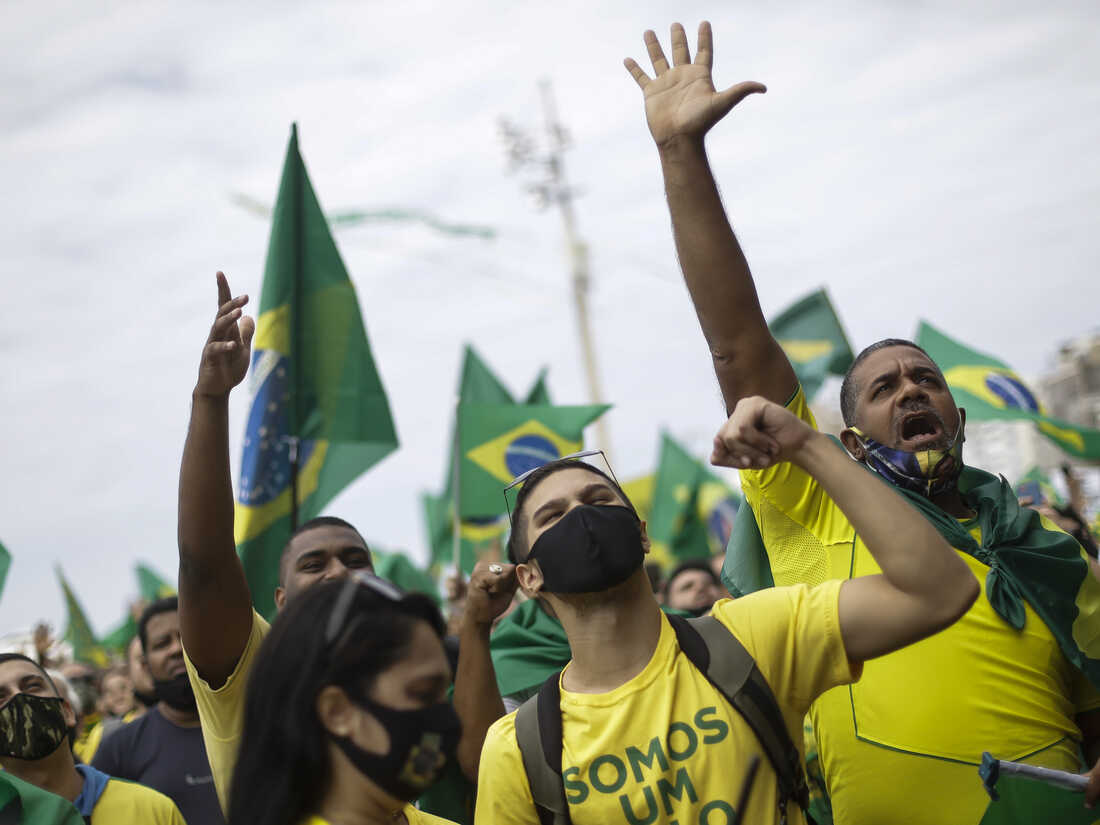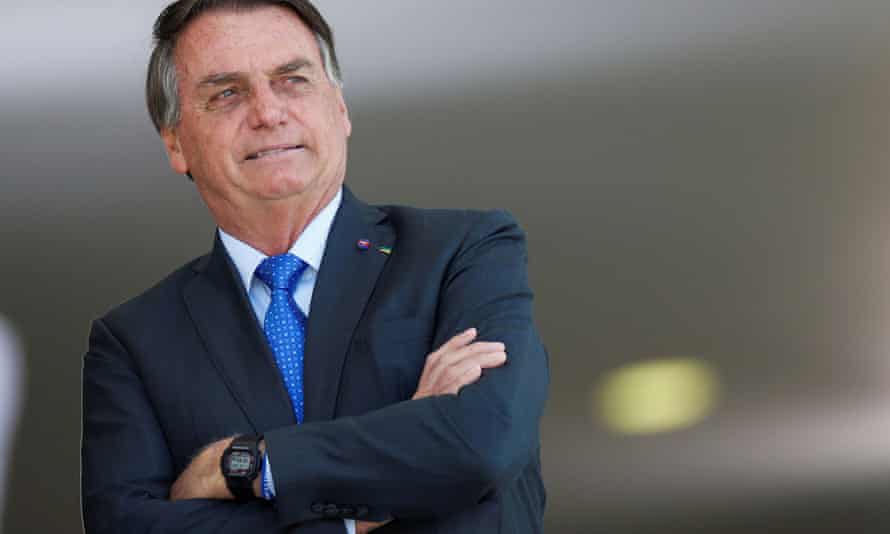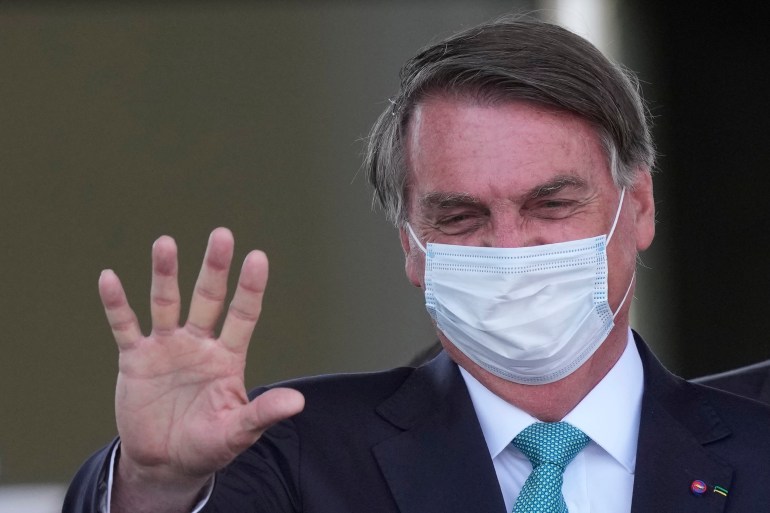Grappling with global disaster at one of the country’s biggest fossil fuel summits.
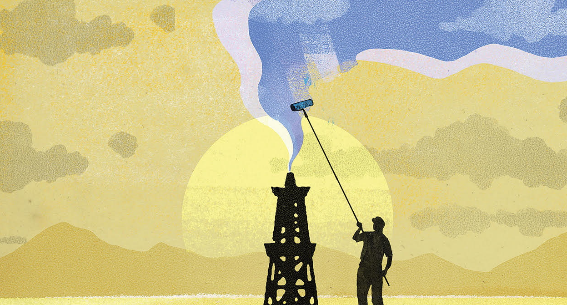
AUG 31, 2021 CHRIS WALKER
Editor’s note: This article is being co-published with Westword, Denver's independent voice since 1977.
“There’s no air pollution today, that’s great!”
“Yeah, it’s so nice.”
So began the first snippet of conversation I heard as soon as I entered the Colorado Oil and Gas Association’s Energy Summit, an annual Denver conference that gathers together the state’s biggest fossil fuel players for a day of panel discussions and liquored-up networking. The exchange came from a man and a woman in business casual who had just poured themselves coffees from a breakfast bar. Not far from them, an old protester with a long white beard stood outside the conference entrance, holding up a large banner proclaiming, “CLIMATE CRISIS!”
This year, the summit took place at the Denver Museum of Nature & Science on Tuesday, August 24, which truthfully did feature relatively clear Colorado skies. But even on a morning where you could kinda see the mountains, it was hard not to remember just how bad things looked over the preceding weeks, when Denver residents choked on the worst air quality of any major city in the world, thanks to a combination of wildfire smoke pouring in from California and the Pacific Northwest as well as ozone pollution fueled, in part, by the oil and gas industry gathering at the conference.
Science has long informed us that human-caused climate change and emissions are largely responsible for both poor ozone and increased wildfires. The United Nations’ recent Intergovernmental Panel on Climate Change (IPCC) report presented even more evidence that human activities like fossil fuel consumption are the primary drivers of climate change. So the fact that this particular conversation about blue skies was taking place at the start of an oil and gas summit was almost too ironic to believe.
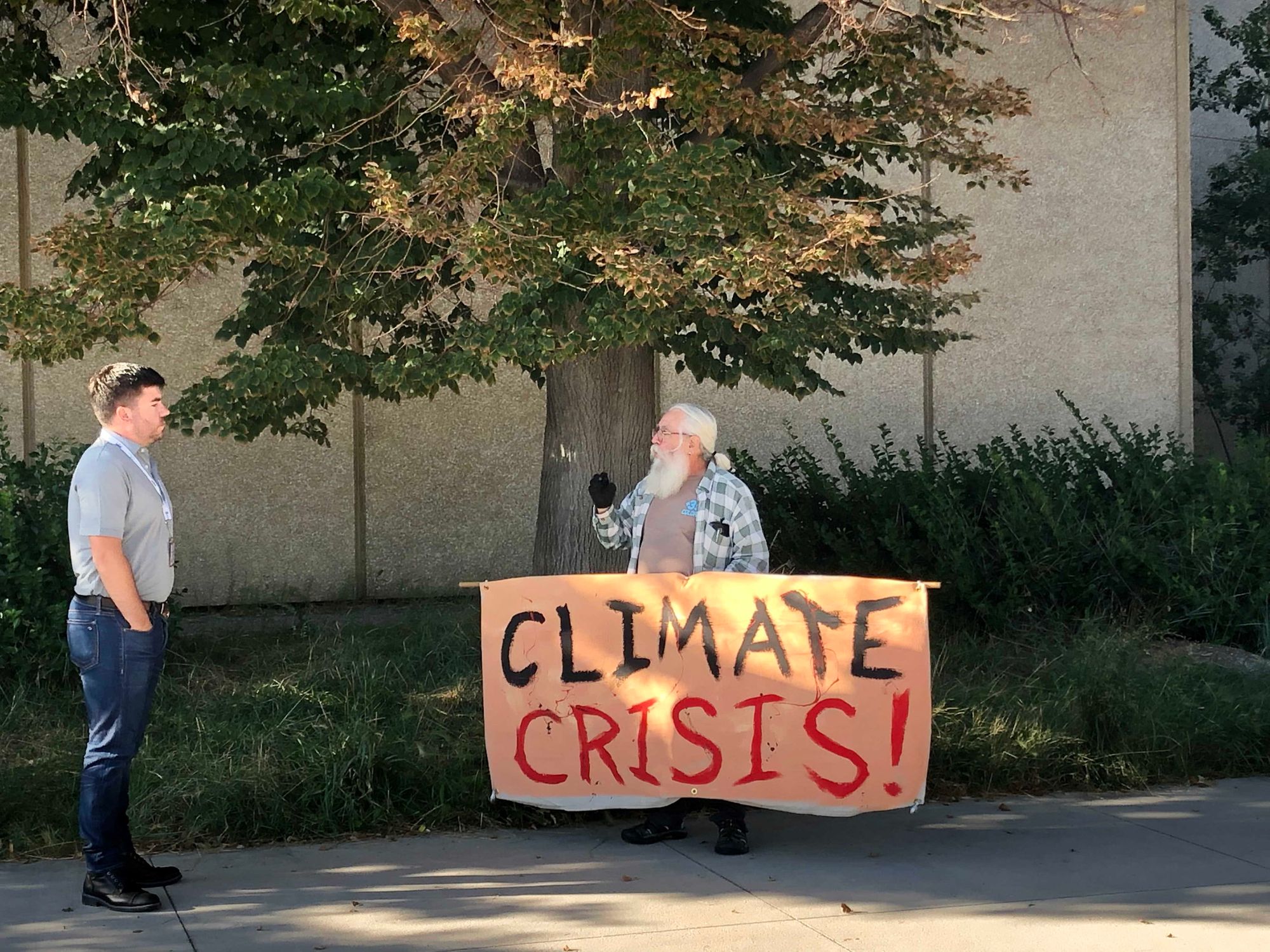
A protestor outside the Colorado Oil and Gas Association’s Energy Summit
(Credit: Chris Walker)
Just as ironic? That the summit was being held at a shrine to the nature that’s being destroyed and the science that’s being ignored — although George Sparks, the museum’s longtime CEO, didn’t see any paradox. As he told attendees in his opening remarks, “I’ve always sorta considered you guys my peeps,” and “There's no industry that embodies nature and science more than [oil and gas].”
But irony or not, I was here on a mission: I wanted to get a read on how the leaders of one of the largest and fastest-growing fossil fuel industries in the country think about climate change, and how they talk about it amongst themselves.
The name of this year’s capstone panel discussion? “Combating Climate Change Together.”
A major rebranding effort is currently under way as fossil fuel interests like the Colorado Oil and Gas Association (COGA) and its members position themselves not as climate change deniers, but as staunch, even proactive, allies in reducing emissions and reaching carbon neutrality. Other summit panels, including “Mitigating Greenhouse Gases” and “Investing in the New-Energy Space,” suggested that the latest iteration of this conference would be unlike any in the past.
Tip Jar
But as I headed deeper into a lobby where the 100 or so attendees milled around platters stacked with fresh fruit and croissants — a noticeably smaller gathering than previous years due to COVID-19 concerns (more were following online) — I wondered how an industry that fundamentally contributes to climate change, not to mention has spent decades burying or denying climate science, can now be acknowledging and even “combating” the disaster. How do Colorado’s oil and gas executives square that circle, and why now?
Just as ironic? That the summit was being held at a shrine to the nature that’s being destroyed and the science that’s being ignored — although George Sparks, the museum’s longtime CEO, didn’t see any paradox. As he told attendees in his opening remarks, “I’ve always sorta considered you guys my peeps,” and “There's no industry that embodies nature and science more than [oil and gas].”
But irony or not, I was here on a mission: I wanted to get a read on how the leaders of one of the largest and fastest-growing fossil fuel industries in the country think about climate change, and how they talk about it amongst themselves.
The name of this year’s capstone panel discussion? “Combating Climate Change Together.”
A major rebranding effort is currently under way as fossil fuel interests like the Colorado Oil and Gas Association (COGA) and its members position themselves not as climate change deniers, but as staunch, even proactive, allies in reducing emissions and reaching carbon neutrality. Other summit panels, including “Mitigating Greenhouse Gases” and “Investing in the New-Energy Space,” suggested that the latest iteration of this conference would be unlike any in the past.
Tip Jar
But as I headed deeper into a lobby where the 100 or so attendees milled around platters stacked with fresh fruit and croissants — a noticeably smaller gathering than previous years due to COVID-19 concerns (more were following online) — I wondered how an industry that fundamentally contributes to climate change, not to mention has spent decades burying or denying climate science, can now be acknowledging and even “combating” the disaster. How do Colorado’s oil and gas executives square that circle, and why now?
Political No-Shows
The first 90-minute panel discussion of the morning offered approximately zero clues to understanding how the fossil fuel industry is coming to grips with climate change, despite broadly covering the areas of political, social, and economic changes since the last energy summit occurred in 2019, before the pandemic.
“Obviously, climate change is a big topic of the day,” said Colorado Politics columnist Eric Sondermann at one point, but then he and his fellow panelists said nothing else about it. They instead focused on how the pandemic is bad for the economy, and how a weak Republican Party in Colorado spells trouble for oil and gas.
Noticeably absent? Actual politicians.
Colorado’s oil and gas industry has grown into the nation's seventh-largest energy market, with over 100,000 employees and an estimated $19-billion a year impact on the state's economy. It has reached that point by flexing its political muscle, having spent $82 million on state elections since 2016, and millions more on local lobbying.
The result is significant political sway: The industry got the state’s Democratic governor and legislators to water down a major climate bill by removing a cap-and-trade approach to emissions reduction before the legislation passed the bill earlier this summer, even though Colorado was already behind on hitting its emission reduction targets.
So it shouldn’t be surprising that previous energy summits drew high-profile Colorado politicians, such as Republican Sen. Cory Garner, Democratic Sens. John Hickenlooper and Michael Bennet, and Democratic Gov. Jared Polis, setting the stage for various political glad-handing opportunities and attempted gotcha questions.
But a few days before this conference, environmentalists from over a dozen organizations called on Hickenlooper and Bennet to make a show of “publicly boycotting” the summit. The activists didn’t have to worry. Even without that outcry, it’s hard to imagine that most Democrats would have been interested in being so publicly associated with oil and gas right now. In fact, Polis and Hickenlooper latter committed to appearing alongside climate advocates the following Wednesday, September 1, at Union Station to promote electric vehicle infrastructure.
The political no-shows weren’t lost on the attendees. “I don’t see any decision-makers,” said one person sitting near me during the first panel.
“Yeah,” replied another, “it’s a brave new world.”
Saving The World Through Fossil Fuels
Things got interesting during the second panel, “Investing in the New-Energy Space.”
“There is no opt-out clause anymore,” a sustainable investment consultant named Alanna Fishman declared about addressing environmental issues. “Just six years ago, it used to be, ‘Why are we entertaining these conversations [about climate change]’?”
Now, said Fishman, investors are pushing corporations on their Environmental, Social, and Governance (ESG) efforts, to ensure the companies are taking proper consideration of social and environmental issues including climate change. Case in point, she said: look at all the corporations scrambling to introduce positions like chief sustainability officers.
But the push by investors for detailed reports on social and environmental responsibility is clearly frustrating some oil and gas players.
“We’ve been doing ESG for 20 years,” said new-energy panelist Chris Wright, CEO of Liberty Oilfield Services, one of Colorado’s largest fracking operations. “I don’t know of an industry with more people that care passionately about the communities they work in, [which are] usually poor, rural communities.”

The “Investing in the New-Energy Space" panel.
(Credit: Chris Walker)
Wright went on to present an argument repeated again and again at the conference: Colorado’s oil and gas companies have been voluntarily cutting greenhouse gas emissions by “the largest grossest reduction of any industry,” thanks to investing in developments like more secure facilities, better methane detection systems, safer pipelines, and infrastructure less prone to gas flares.
But these changes didn’t come about simply because they were the right thing to do. The improvements helped the companies’ bottom lines. “We all know about the London… er, the Paris Accord or whatever that thing was… that basically put a lot of limitations on what we’re doing,” Drew Talley, a drone operator who detects methane emissions, told me during a break. “But what people don’t realize is that producers don’t want this gas to leak either, because when this gas leaks, that’s money. It’s hitting them in their pocket book.”
Wright, however, didn’t want to talk about saving money or embracing corporate sustainability at the new-energy panel. He wanted to hammer home an idea his fracking company put forward in its first ESG report, released earlier this summer: Fossil fuels are helping humanity.
“Our goal isn’t to check a box or to meet some goal that someone else says is really important,” Wright told the panel. “It’s what we believe will drive the betterment of human lives.”
“And let me divert on that a minute,” he added.
“There. Is. No. Climate. Crisis.”
Wright paused, and you could feel the electricity in the room. He went there. Two guys in front of me looked at each other and smirked.
Wright has a history of provocation. He generated headlines earlier this year when he trolled The North Face with a video and Denver billboard thanking the brand for making its products using petroleum, after the brand refused to fulfill an order of fleece jackets by a Texas oil and gas company.
But even coming from Wright, the outright denial of a climate crisis seemed extreme. After all, most attendees had passed by the climate activist waving a banner outside the event proclaiming those very words.
Wright elaborated on his claim: “There’s been no increase in extreme weather in the roughly 100 years of datasets we have. And… the annual deaths globally from extreme weather events have dropped 95 percent over the last century, from an average of half a million a year to an average of 25,000 [a year] over the last decade.”
Wright was way off the mark. Most of his information — as referenced in his own ESG report — seems to have come from a single researcher’s interpretation of old IPCC reports. The latest IPCC report from a few weeks ago, which Wright chummily pointed out “no one reads,” makes unequivocal links between extreme weather and human-caused climate change. For example, climate scientists on the panel found that the types of historic heat waves like the one recently experienced in the Pacific Northwest are now 150 times more likely than they were in the past.
The World Health Organization, meanwhile, now blames climate change for 150,000 annual deaths, and that number is on the rise.
But Wright had more pressing matters on his mind — like bad dreams.
“The energy dialogue getting divorced from reality has massive, massive costs,” he told the room. “One that hits close to home: 20 percent of children report having nightmares about climate change when they go to sleep. I speak in schools all the time; childrens (sic) have way less interest in going into science or technical fields because what they see is: Science is ‘Thou shall adopt the alarmist doctrine or you will be called a denier and shunned.’”
One of Wright’s proposed solutions: get more hydrocarbons in the hands of poorer societies. “A third of humanity cook their daily meals using wood, dung, and agricultural waste inside their homes,” claimed Wright, which he said was causing indoor particulate pollution and millions of deaths. What could possibly be a better social impact than making sure people have fossil fuels so they aren’t cooking with poop?
When the panel ended and attendees headed towards lunch, people were still buzzing from Wright’s comments.
“Chris is always fun,” one said.
“Yeah, I had a friend who’s watching the livestream text me and say he’s laughing,” another responded.
Others had strategic takeaways from the environmental, social, and corporate governance discussion.
“My interpretation is using ESG as an offensive rather than a defensive category,” said one conference-goer as we snaked our way through the museum’s space exhibit.
“Yeah, it’s like a power play!” replied a colleague.
Wright went on to present an argument repeated again and again at the conference: Colorado’s oil and gas companies have been voluntarily cutting greenhouse gas emissions by “the largest grossest reduction of any industry,” thanks to investing in developments like more secure facilities, better methane detection systems, safer pipelines, and infrastructure less prone to gas flares.
But these changes didn’t come about simply because they were the right thing to do. The improvements helped the companies’ bottom lines. “We all know about the London… er, the Paris Accord or whatever that thing was… that basically put a lot of limitations on what we’re doing,” Drew Talley, a drone operator who detects methane emissions, told me during a break. “But what people don’t realize is that producers don’t want this gas to leak either, because when this gas leaks, that’s money. It’s hitting them in their pocket book.”
Wright, however, didn’t want to talk about saving money or embracing corporate sustainability at the new-energy panel. He wanted to hammer home an idea his fracking company put forward in its first ESG report, released earlier this summer: Fossil fuels are helping humanity.
“Our goal isn’t to check a box or to meet some goal that someone else says is really important,” Wright told the panel. “It’s what we believe will drive the betterment of human lives.”
“And let me divert on that a minute,” he added.
“There. Is. No. Climate. Crisis.”
Wright paused, and you could feel the electricity in the room. He went there. Two guys in front of me looked at each other and smirked.
Wright has a history of provocation. He generated headlines earlier this year when he trolled The North Face with a video and Denver billboard thanking the brand for making its products using petroleum, after the brand refused to fulfill an order of fleece jackets by a Texas oil and gas company.
But even coming from Wright, the outright denial of a climate crisis seemed extreme. After all, most attendees had passed by the climate activist waving a banner outside the event proclaiming those very words.
Wright elaborated on his claim: “There’s been no increase in extreme weather in the roughly 100 years of datasets we have. And… the annual deaths globally from extreme weather events have dropped 95 percent over the last century, from an average of half a million a year to an average of 25,000 [a year] over the last decade.”
Wright was way off the mark. Most of his information — as referenced in his own ESG report — seems to have come from a single researcher’s interpretation of old IPCC reports. The latest IPCC report from a few weeks ago, which Wright chummily pointed out “no one reads,” makes unequivocal links between extreme weather and human-caused climate change. For example, climate scientists on the panel found that the types of historic heat waves like the one recently experienced in the Pacific Northwest are now 150 times more likely than they were in the past.
The World Health Organization, meanwhile, now blames climate change for 150,000 annual deaths, and that number is on the rise.
But Wright had more pressing matters on his mind — like bad dreams.
“The energy dialogue getting divorced from reality has massive, massive costs,” he told the room. “One that hits close to home: 20 percent of children report having nightmares about climate change when they go to sleep. I speak in schools all the time; childrens (sic) have way less interest in going into science or technical fields because what they see is: Science is ‘Thou shall adopt the alarmist doctrine or you will be called a denier and shunned.’”
One of Wright’s proposed solutions: get more hydrocarbons in the hands of poorer societies. “A third of humanity cook their daily meals using wood, dung, and agricultural waste inside their homes,” claimed Wright, which he said was causing indoor particulate pollution and millions of deaths. What could possibly be a better social impact than making sure people have fossil fuels so they aren’t cooking with poop?
When the panel ended and attendees headed towards lunch, people were still buzzing from Wright’s comments.
“Chris is always fun,” one said.
“Yeah, I had a friend who’s watching the livestream text me and say he’s laughing,” another responded.
Others had strategic takeaways from the environmental, social, and corporate governance discussion.
“My interpretation is using ESG as an offensive rather than a defensive category,” said one conference-goer as we snaked our way through the museum’s space exhibit.
“Yeah, it’s like a power play!” replied a colleague.
“Oil And Gas Touches Everything”
Now it was time for a power lunch. The museum had set out way more tables than needed in the building’s glass-topped, central atrium. I approached a table with a few people already seated. “A warning and an invitation,” I said before sitting. “I’m a journalist.”
“Uh oh,” a woman said. But she laughed, invited me to join the table, and introduced herself as Tia Haggart.
Haggart is a sales representative for a company called Uptake that licenses software to oil and gas producers. It’s not something she always talks about with her friends. “They are environmentally conscious and enjoy nature, like outdoor activities in Colorado,” she said. “But they don’t necessarily think of how oil and gas touches everything.”
Haggart mentioned cars, then pointed towards her phone as another example. “This was made with oil,” she said. “And even Tesla, their battery-operated cars use minerals that are mined with oil and gas.”

Lunch at the Colorado Oil and Gas Association’s Energy Summit
(Credit: Chris Walker)
Lately, Haggart told me, discussions with her friends about her work and its impact on the planet are getting more heated and less rational. “I usually choose not to talk about it,” she told me. “You have to choose your battles. But sometimes I dig in, and I’ll say, ‘Well, stop using your phones, computers, and so on.’”
“Like Chris [Wright] said,” she continued, “we’ve been doing ESG forever. Now they just want us to put it in reports to make it look good for investors.”
“So what did you make of his comment that there is no climate crisis?” I asked the table. “Because that would seem to butt up against the U.N. Secretary-General’s recent remarks that the IPCC’s [August 9 report’s] findings amount to a ‘code red for humanity.’”
A geologist named Rick Palm spoke up. “I think what [Wright] said, to back it up, was all about death rates,” he said. “It wasn’t about whether there is an increase in climate change or not.”
So climate change, I was learning, is real. But a climate crisis? Perhaps a bridge too far for this crowd.
Just then, waiters wearing masks appeared with breaded chicken and rice dishes. Afterwards, conversation turned to the terrible wildfires in California that were pouring so much smoke across the American West.
“I just wish we could do something about it,” said Haggart.
Lately, Haggart told me, discussions with her friends about her work and its impact on the planet are getting more heated and less rational. “I usually choose not to talk about it,” she told me. “You have to choose your battles. But sometimes I dig in, and I’ll say, ‘Well, stop using your phones, computers, and so on.’”
“Like Chris [Wright] said,” she continued, “we’ve been doing ESG forever. Now they just want us to put it in reports to make it look good for investors.”
“So what did you make of his comment that there is no climate crisis?” I asked the table. “Because that would seem to butt up against the U.N. Secretary-General’s recent remarks that the IPCC’s [August 9 report’s] findings amount to a ‘code red for humanity.’”
A geologist named Rick Palm spoke up. “I think what [Wright] said, to back it up, was all about death rates,” he said. “It wasn’t about whether there is an increase in climate change or not.”
So climate change, I was learning, is real. But a climate crisis? Perhaps a bridge too far for this crowd.
Just then, waiters wearing masks appeared with breaded chicken and rice dishes. Afterwards, conversation turned to the terrible wildfires in California that were pouring so much smoke across the American West.
“I just wish we could do something about it,” said Haggart.
Money Talks
During the afternoon panels, the conference took a sharp turn.
“We need to reduce emissions quickly, and pull CO2 directly out of the air,” said Ryan Edwards during a session on mitigating greenhouse gases. Edwards is a policy advisor for Occidental Petroleum, whose acquisitions include Anadarko Petroleum, a company that found itself in hot water for, among other things, owning a leaking gas line that caused a home explosion and two deaths in Firestone, Colorado in 2017.
“The IPCC is making it clearer and clearer every day that [emissions reductions are] going to have to happen,” Edwards continued in a twangy Australian accent. “And I think the science is overwhelmingly indisputable that we need this, and we need it on a big scale, so it’s getting harder and harder to say we don’t.”
Give a Gift Subscription
The remark felt like a sharp divergence from the tone of other summit panelists, but Edwards then revealed the strategic thinking behind Occidental’s pledge of carbon neutrality by 2050: The company is taking full advantage of tax credits Congress expanded in 2018 for companies that capture and store atmospheric carbon dioxide.
Financial incentives might be pushing the oil and gas industry to embrace carbon capture and sequestration. But the jury’s still out on the efficacy of direct air capture technology, especially if such approaches are being deployed to justify extracting more oil and gas. After all, if reducing carbon footprints is the ultimate goal, isn’t the most effective move to transition away from fossil fuels?
After the discussion ended, I asked one of the panelists this question. The person didn’t have permission from their boss to speak on the record, but on background, they said they didn’t see the demand for fossil fuels going away in the near future. Even if their company were to stop extracting oil, others would continue to do so, since people keep buying it.
All The Feels
The final session of the day, provocatively named “Fighting Climate Change Together,” reiterated the idea that Colorado’s oil and gas industry doesn't plan to make fundamental changes anytime soon
“Exactly one hour from now you’ll be able to reward yourself with a drink,” began the moderator, a free-market advocate named Kristin Strohm who heads a think tank called the Common Sense Institute.
But before the libations, Strohm set up the day’s big conversation around climate change. “There seems to be no industry spared as pushes for more regulations and mandates continue to swirl around climate change discussions,” she said. “The question you have to ask yourself is: Are these aggressive climate change proposals even realistic, or would it mean the destruction of businesses, industry, and even our economy?”
Dan Haley, president and CEO of COGA, who had played event host all day, jumped in.
“When we have conversations about climate change," he said, "it’s important to start with the work this industry has already done to reduce our emissions, and we should be proud of that."
The worst thing Colorado could do? Become California, said Haley, "a state that says fossil fuels are the bad guys and they import fossil fuels from foreign countries because they can’t keep their grid going in the summertime."
"That increases climate change," he claimed, since fossil fuels from other nations might not be produced with the sort of clean techniques utilized in Colorado.
The main problem, he told the crowd, has been messaging.
“I was fortunate to get this job six years ago,” said Haley, who had previously served as The Denver Post’s editorial page editor. “And I told a friend of mine that I was going to be doing this, and she said, ‘Oh that’s so great.’ But then she whispered, ‘But we don’t tell anybody.’
“That doesn’t work,” he said. “If we’re not proud of what we’re doing, then our friends, neighbors, and fellow Coloradans won’t be proud of what we’re doing.”
Yes, Haley continued, “We have the science on our side… we have the data and the facts on our side,” but more than anything else, he declared to his colleagues, “We also need to come with emotion. And we need to talk about how important this industry is to our way of life in Colorado, all the wonderful things we’re doing to contribute to humanity.”
The fellow panelists, including representatives from Colorado’s auto, agriculture, and housing industries, all nodded.
Yes. Emotion.
“People want to feel good.” Haley was on a roll. “They want to feel that people are acting on their behalf — and these industries are. We’ve got to figure out how to tell that story.”
Finally, we seemed to be getting somewhere: Maybe right here, right now, the people responsible for half of Colorado’s greenhouse gas emissions would reveal the secrets of how they plan to convince the world that they are actually the ones who are going to save us from climate disaster.
But then 5 o’clock hit, and Strohm, the moderator, cut in: “I know I’m standing between you and cocktails!”
Reckoning with climate change would have to wait. It was time to drink.
This newsletter relies on readers pitching in to support our journalism. If you like this story, please support The Daily Poster's work.












